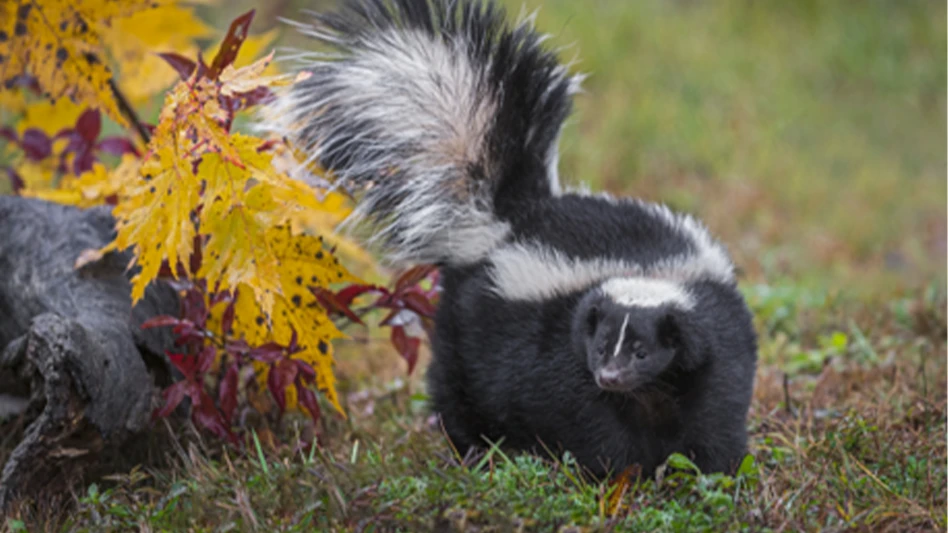My grandfather, a long-time pest management professional, used to say, "It doesn’t matter how many rats you kill, it’s the last one that counts." To this day his philosophy applies to controlling rodents in general, and the destructive Norway rat (Rattus norvegicus) in particular.
Also known as the brown rat or sewer rat, the Norway rat likes to infest garbage disposal sites, among other locations, where it finds food, water and shelter. It often infests open garbage dumps, which have conditions that support rat populations.
Norway rats can be difficult to control. They are cautious creatures. They reproduce frequently — the female gives birth to 20 or more offspring during a year — and they are a hardy species. To meet the challenge of effectively controlling them, you have to correctly identify them and understand their behavior. And you have to enlist the cooperation of dump-site managers in order to reduce or eliminate conditions favorable to this rodent species.
Identifying Norway rats should be easy. Larger and heavier than the roof rat, it weighs about a pound and is approximately 13 to 18 inches long, including a 6- to 8-inch long tail, with mostly brown and scattered black fur on the top of their bodies and an underside that’s usually gray to yellowish white.
They have excellent senses of smell, taste and touch. Their keen sense of smell compensates for poor eyesight. This helps them find food and recognize other rats. And their sense of taste is so good that they can detect extremely low levels of contaminants in food.
Norway rats usually nest in underground burrows or at ground level under the garbage, so our advice to disposal site managers is to pack down the garbage as tight as possible. The garbage should also be in the center of a pit allowing the PMP to inspect the soil around the garbage itself. Packing the garbage regularly allows the PMP to more easily find the rat burrows. The rats will not likely nest in areas where packing happens regularly.
Primarily nocturnal, Norway rats search for food and water as the sun goes down. Some may be active during daylight hours, which could indicate a significantly high rat population. During their regular routines, rats normally travel an area of about 100 feet in diameter; it’s unusual for them to travel farther than 300 feet from their burrows to get food or water. They’re always exploring their environment and therefore become familiar with pathways, obstacles, and sources of food and water. They’re quick to discover new objects in their territory — such as traps and bait stations — and tend to avoid them for a number of days after they’ve been discovered.
DISPOSAL SITE. Because of the unique environment of a disposal site, the job of rodent control presents a special challenge to PMPs. Garbage heaps and sharp objects are often scattered about, so safety is important. When walking through a disposal site to inspect and treat for these rodents, PMPs must wear the proper protective clothing such as steel-toed rubber boots, long pants, long-sleeved shirts and heavy leather gloves. Rubber gloves may be required to apply a rodenticide.
The most important factor to consider when challenged by Norway rats is successful population control. Killing individual rats is not enough; the idea is to control the population. This begins with taking IPM actions to make a dump less hospitable to rat populations. Efforts should be made to reduce the amount of available food and water. Ensuring proper sanitation and waste management are also key, as well as reducing harborage by cleaning up refuse and debris.
The first location to start is the perimeter of the disposal site. It’s also a good idea to make the site’s fence line habitat-free by putting down crushed limestone or packed earth — this will prevent the rodents from burrowing in and around the area. The perimeter should have very short-cut vegetation or no vegetation at all. The more open the area, the better. This will discourage rats from wanting to cross an open area because they fear possible predators. It will also help you view them more easily if they are there. When locating their nesting grounds, you can treat by placing a labeled rodenticide in the burrow or use a tracking powder down the burrow.
Using bait stations at a disposal site along the perimeter will help you eliminate rats before more of them actually invade the site. Non-chemical tools such as snap traps inside bait stations can be useful, but that depends on how many are required to do the job. Often snap traps at a disposal site require daily monitoring, which is not always feasible. The fact, too, that the rats might become trap shy should be considered. They are smart creatures. IPM encourages reducing the amount of pesticide used, but a site where trash is dumped needs to be treated more aggressively than other (and more sensitive) accounts. Proper placement of rodenticide and tracking powders is strongly encouraged.
It’s a good idea to use several different rodenticides, as well as a variety of formulations, in a rat control program. By doing so, the PMP will discover which bait the rats will accept and which ones they won’t. Bait acceptance is difficult enough at a disposal site because the rats have many other food options to choose from.
When you’re working at a disposal site, you’ve got to be creative and make the surrounding conditions work for you. Rat burrows can be very close together in a large infestation. Creating harborage sites for them with rodent control devices can be very useful. As an example, we’ve hidden five to 10 bait stations underneath a large sheet of plywood and propped the wood up slightly with a two-by-four. This gave the rats coverage and sheltered access to the bait, which they devoured. Rats like to be sheltered when feeding and we need to create those areas for them. Setting up several of these homemade shelter stations allows for the treatment of a large area.
After a Norway rat treatment, it’s always a good idea to follow up soon with an inspection and/or second treatment. We have found that rats have cleaned out large numbers of bait stations and consumed several pails of bait at a garbage disposal site in a short time span. Follow-up visits will be required multiple times as well as regularly. Most times, activity recurs because of the lack of follow up and the insufficient use of baits.
It’s always a good idea to review and follow labeled instructions when using rodenticides. Some municipalities restrict where and how rodent baits can be used. Be aware of permit requirements in your area. Some may require that notification be given and/or permits are needed to treat public property.
Two rodent control techniques that we’ve heard of, but don’t recommend, are shooting the rats and setting the dumps on fire. Shooting them might initially knock down the population but it’s not a long-term solution and the rats will quickly learn the sound of a firearm being loaded. The second method, fire, is also short term. It may kill some of the rats, but it will also force the survivors to spread to other areas, perhaps someone’s home.
Lincoln Poulin is a 10-year veteran of the pest management industry and is general manager and technical director for Poulin’s Pest Control, headquartered in Winnipeg, Manitoba, Canada. He is a third-generation pest controller of a family-owned company with eight offices throughout western Canada. A member of Copesan’s Technical Committee, he also specializes in working with food manufacturing companies that require food safety/HACCP-compliant programs. He was responsible for his company becoming ISO Certified in 2001.
Copesan is an alliance of pest management companies with locations through out North America. To learn more, visit www.copesan.com.

Explore the November 2010 Issue
Check out more from this issue and find your next story to read.
Latest from Pest Control Technology
- Pest Control Equipment: If it’s Critical, Back it Up!
- In Memoriam: Marybeth Wonson
- In Memoriam: Layton Word
- Mitchell Boston's Involvement as Local Councilman Sparks Growth in Pest Control Business
- Grizz Pest Management Owners Support Wildlife Conservation with Brookfield Zoo in Chicago
- Grizz Pest Management Partners with Brookfield Zoo to Build Tropical Forests Exhibit
- Truly Nolen Promotes Bohne to Vice President of Business Development
- Watch: Abell Pest Control Holds Snap Trap Challenge





